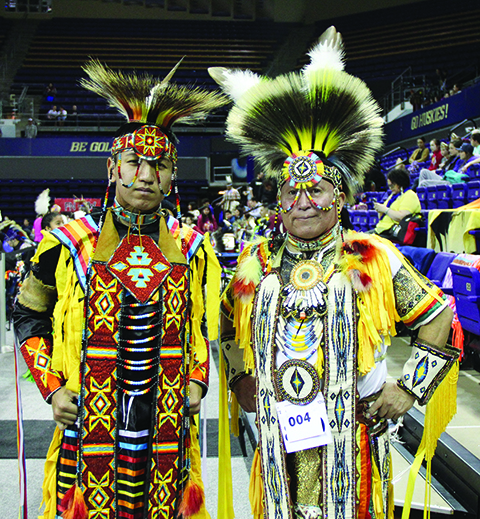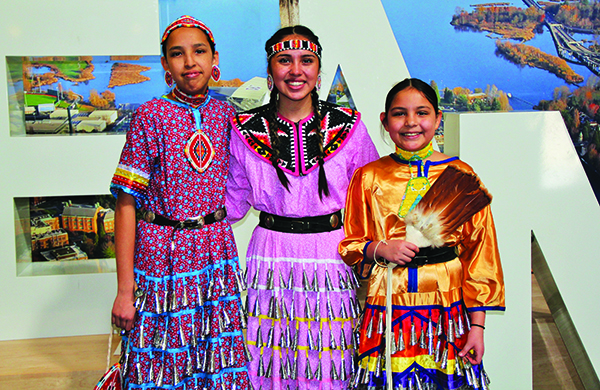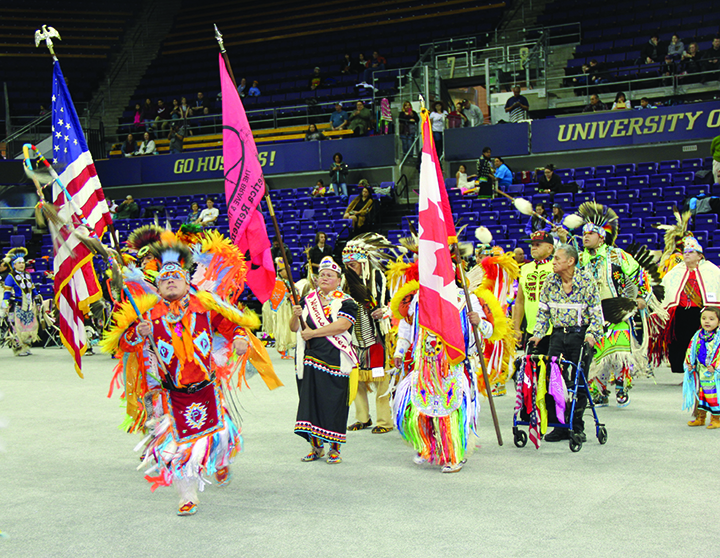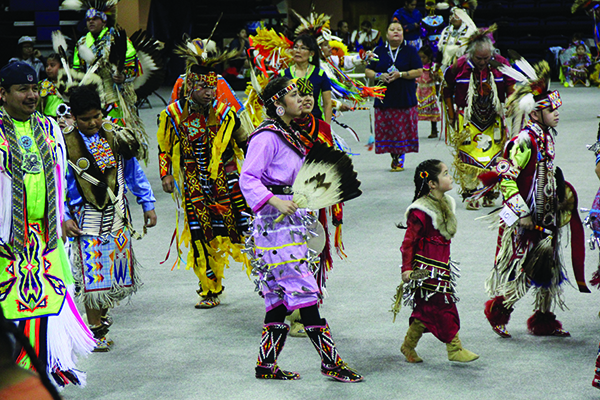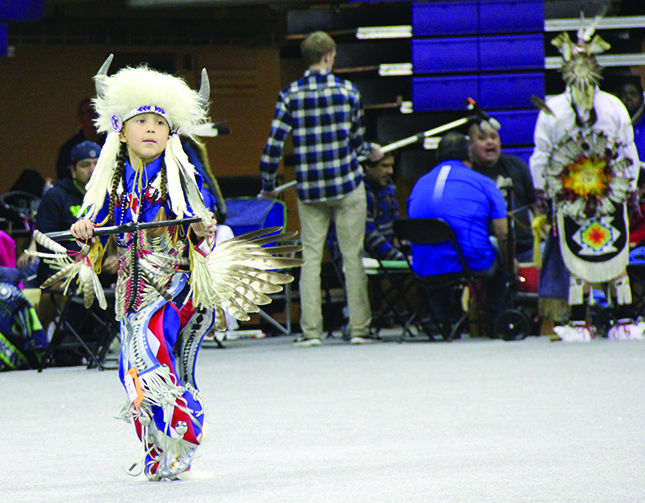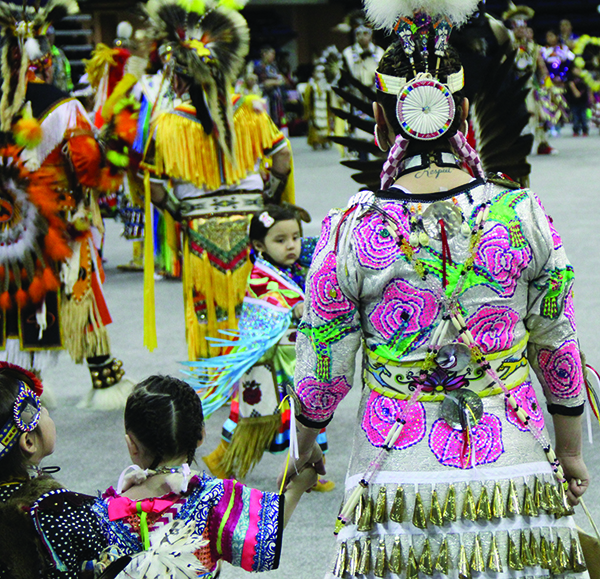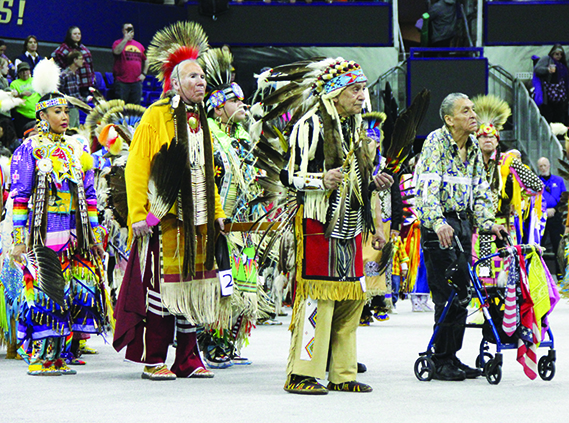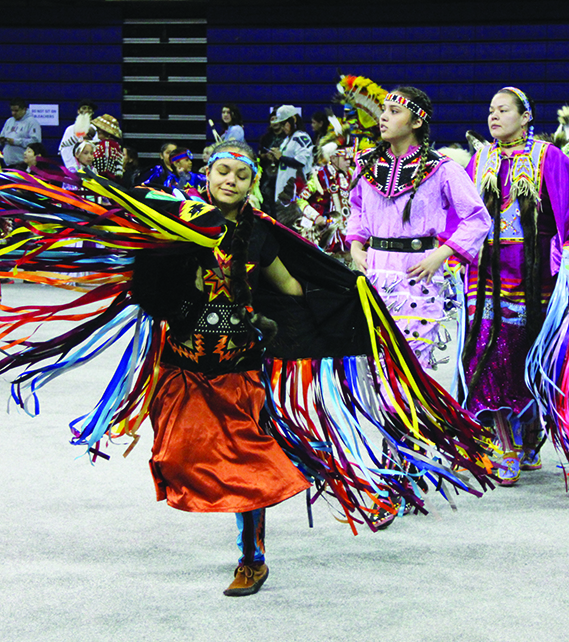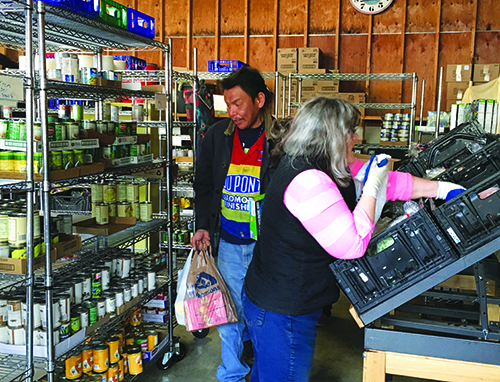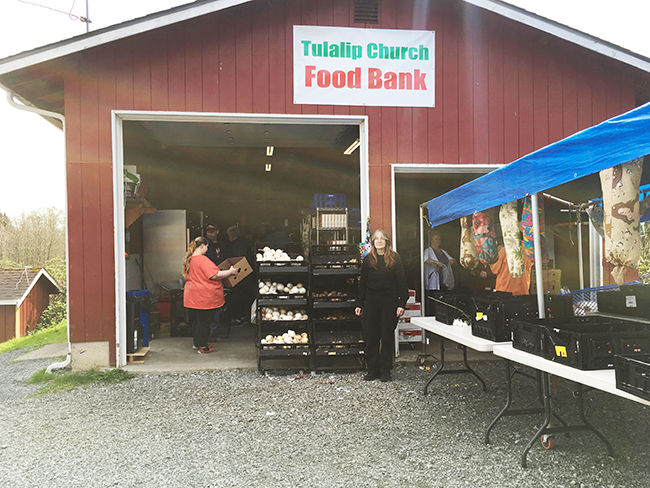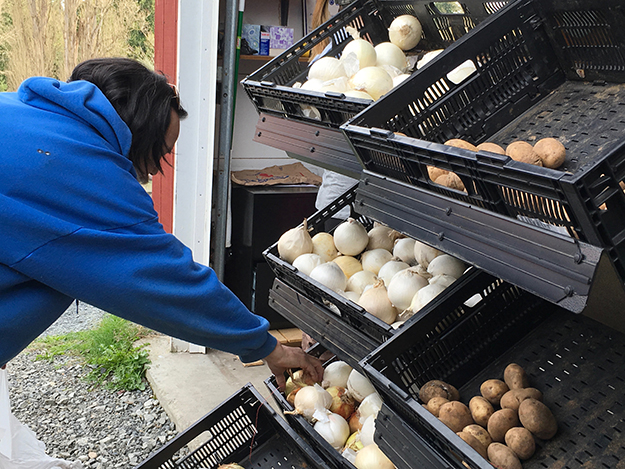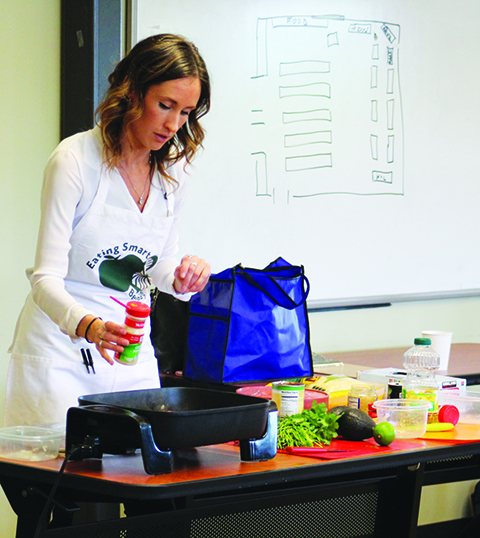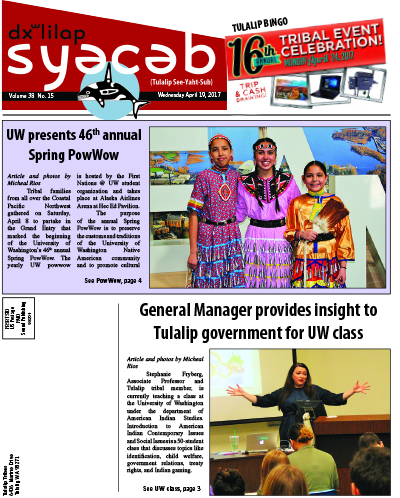Author: Kim Kalliber
Easter Bunny hops around Early Learning Academy
Micheal Rios, Tulalip News
Looks of surprise and sheer joy were shared by countless students of the Betty J. Taylor Early Learning Academy when the Easter Bunny hopped into town. The kids, ranging in age from toddler to 5-years-old pushed their daily activities aside and sought to be as close to the huge, furry celebrity as possible.
The rascally rabbit hopped right into the academy and proceeded to visit every classroom from ECEAP side (students birth to 3-years-old) and then onto the Montessori side (students 3-5-years-old). Nearly every classroom the white fuzzy Bunny would enter, resulted in smiles, squeals of delight, laughter and plenty of hugs.
Following the classroom visits, the Easter Bunny led the older students on several Easter egg hunts at the academy’s playground. There were mad dashes to collect the candy-filled eggs while all the students got to take home a basket filled of Easter treats.
April is Child Abuse Prevention Awareness Month
Mission Beach Water Quality Monitors Needed
General Manager provides insight to Tulalip government for UW class

By Micheal Rios, Tulalip News
Stephanie Fryberg, Associate Professor and Tulalip tribal member, is currently teaching a class at the University of Washington under the department of American Indian Studies. Introduction to American Indian Contemporary Issues and Social Issues is a 50-student class that discusses topics like identification, child welfare, government relations, treaty rights, and Indian gaming.
It’s one thing to read textbooks and scholarly articles about tribal histories, governments and the way of life on reservations, but no amount of research will be as perceptive as first-hand accounts from tribal members who know the intricate and complex systems that make-up the day-to-day operations of a Native community. That is why Stephanie extended an invite to Misty Napeahi, Tulalip Tribes General Manager, to be a guest speaker for the class. Misty accepted and gave an insightful presentation to the collegiate students on Monday, April 10.
In a fascinating tactic, Misty began her presentation by wanting to give the students just a small glimpse into what tribal people have gone through and continue to go through today. How it worked was each student wrote down the three most important things in their lives, three things each individual felt they could not live without. Most common answers were family, faith/spirituality, knowledge, and friends. Misty then asked for the paper students wrote their answers on and in dramatic fashion she tore up the papers and threw them in the trash.
Misty explained to the students that they just willfully handed over the things they felt were most important in their lives to an authority figure who then deemed those things unimportant and trash. Student expressions of shock and frustration were priceless as they realized the subtleties of what just occurred.
“This exercise is supposed to make you think and feel uncomfortable. It shows you how indigenous people feel almost every day,” explained Misty to her captive audience. “When I was asked to speak about contemporary issues in the workforce for the Tulalip Tribes this exercise came to mind. This is what I deal with on a daily bases, people and employees who have had family members and friends taken away, people who have been told their religion is savage and barbaric.
You all have read about historical and generational trauma, but we live it. Where I’m from and where I work, we can see and feel it on a near daily basis. Issues like domestic violence and drug addiction are a symptom of all the trauma we have gone through, that our parents and grandparents went through when they were stripped of their families, language, and religion. The traumas makes people feel powerless and that powerlessness can carry on for generations.”
Following the opening exercise, Misty went on to explain how out of the ashes of all destruction and traumas Native people went through they endured and grew to govern themselves. Using the Tulalip Tribes as her example, the students became aware of the transitions that the tribe has gone through to get where it is at today. Topics included the tribal preference code for employment, TERO, the diversity of departments that compose Tulalip’s government, and the delicate systems at work when it comes to a tribal community (where everyone knows or is related to so many others) creating a workforce of countless interpersonal relationships.
There were plenty of opportunities for the inquisitive students to ask questions and for more information on issues that peaked their interest. Misty was very honest and detailed in her responses.
Three UW students shared their immediate thoughts after witnessing General Manager Misty Napeahi give her thought provoking and informationally rich presentation.
“I thought it was great. It touched on all the things that you don’t really see, but you know are probably occurring on the reservation,” said 22-year-old Collin Youngblood.
Third-year student Harneet Grewal shared, “I thought it was really eye-opening. She spread a lot of awareness to what Native people have gone through in the past, but also what they are going through currently. To consider what a person is going through, from their family and what their mental health and background may be is so different from Western culture.”
Kenia Diaz, also a third-year student added, “I thought it was very interesting overall. Like our professor said, she is not capable of giving us the insights that the General Manager of the tribe can. I feel like the reservation itself, the way it’s governed is like a family and I really like that. That type of community is awesome because people are willing to build each other up and empower one another.”
A New Vision for Tulalip: Everett Optometry Clinic Opens at Karen I. Fryberg Health Clinic
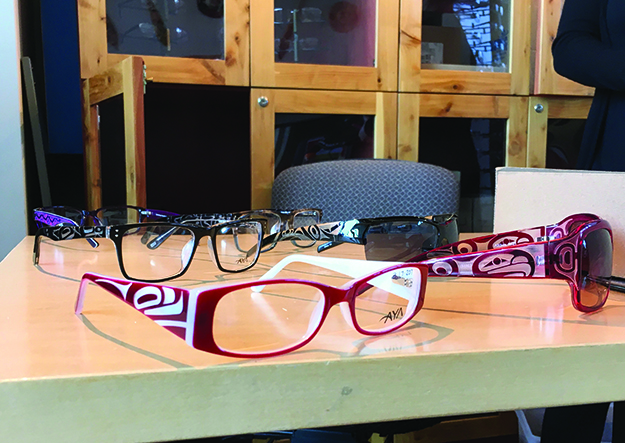
By Kalvin Valdillez, Tulalip News
The Tulalip Tribes recently welcomed the Everett Optometry Clinic, this past November, to a new office located at the Karen I. Fryberg Health Clinic. For the past forty years, Everett Optometry has provided eye care services to Snohomish county residents. With numerous positive online reviews, the optometry clinic is a favorite among locals of the Everett area. By bringing their friendly customer service and making accountability top priority, Everett Optometry looks forward to a new outlook in eye care for the Tulalip community.
Eye health is often overlooked. In today’s society of constantly switching between phone, tablet, computer and TV screens it is important to take care of your eyes and visit the optometrist for an annual exam. During a comprehensive eye exam, an optometrist can determine if a patient requires prescription glasses or contact lenses as well detect early signs of diseases such as glaucoma and cataracts.
Diabetes and high blood pressure, both major health concerns across Native America, can cause damage to the eye vessels, and if untreated can lead to complete vision loss. Everett Optometry works with the Tulalip Health Clinic’s medical professionals to provide the best possible care under one umbrella to individuals living with diabetes or high blood pressure.
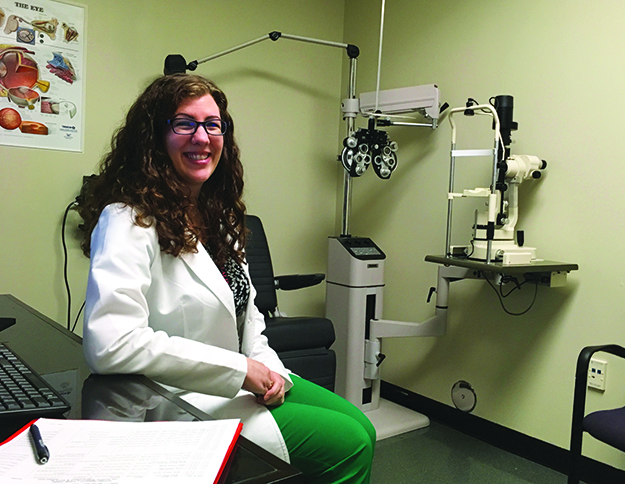
Optometric Physician, Dr. Rachel Spillane spoke of the importance of eye exams, “It’s just so critical at all ages, we are seeing everyone from two year-olds to ninety year-olds. Especially for kids right as they are entering school, we want to make sure they have the proper vision and their eyes are focusing properly so they will be able to learn.”
Children who are nearsighted, vision that causes far away objects to appear blurry, are able to express their visual impairment and therefore can be treated. However, children who see objects in the distance clearly but have trouble seeing closer items, or farsighted, may not communicate that they are having difficulties seeing properly. For this reason, it is important to get children’s eyes checked at a young age, preferably before heading into school. During the eye chart test, when patients read letters out loud from a distance, Dr. Spillane provides fun shapes such as animals for the younger children who may not know their alphabet yet. The optometry clinic also takes the time to discuss proper usage and safety for glasses and contact lenses with children.
In some cases, parents opt to wait to take their children to the optometrist until they are older, preventing the child from unlocking their full potential in school.
“We’ve been finding a lot of kids that are a little further along, I’d say about second grade, they’re really struggling. Their teachers have labeled them as problem children because they’re not able to focus and pay attention. And then I’ll do their exam and find out they can’t see anything. But at that age they don’t say what’s wrong. As an adult we’ll say, I have a headache, or the words are going in and out [of focus]. Kids won’t, they’ll just quit and go do other things,” she stated.
The new office has state of the art technology allowing Dr. Spillane the ability to perform a majority of the procedures at the clinic, with a few exceptions including Lasik Laser eye surgery, which can be performed at the Colby Avenue location. The optometry clinic also sees patients for infections such as pink eye, as well as emergency situations like cuts or eye bleeding.
Dispensing Optician, Dianna Felgar, assists during the process of choosing the perfect pair of frames, lenses, and contact lenses for each patient. The new optometry clinic offers a variety of frames from over thirty brands including Oakley, Ray Ban, Dolce & Gabana, Maui Jim, and the Native American eyewear company Aya.
Qualified patients may receive additional financial assistance through Tulalip’s Patient Assistance program. Gloria Beal, Paraoptometric at the clinic, works with finance and insurance companies to ensure the patient is receiving the funding they are eligible for, therefore allowing them to receive the care they require.
Currently the Everett Optometry Clinic is open on Tuesdays and Thursdays between the hours of 8:00 a.m. and 5:00 p.m. However, through an office cell phone where voicemail and text messages are encouraged, they are available to the Tulalip community at all times. Patients can also be seen Monday-Friday at the Everett location.
For additional information please contact (360) 716-4511, visit www.everettoptometry.com, or call/text their office cell phone (425) 314-1312.
UW Presents 46th Annual Spring PowWow
By Micheal Rios, Tulalip News
Tribal families from all over the Coastal Pacific Northwest gathered on Saturday, April 8 to partake in the Grand Entry that marked the beginning of the University of Washington’s 46th annual Spring PowWow. The yearly UW powwow is hosted by the First Nations @ UW student organization and takes place at Alaska Airlines Arena at Hec Ed Pavilion.
The purpose of the annual Spring PowWow is to preserve the customs and traditions of the University of Washington Native American community and to promote cultural education and diversity on campus. The powwow is the largest student-run event on campus, attracting over 5,000 people expected to attend throughout the weekend every year.
First Nations @ UW is run by both undergraduate and graduate students of Native and non-Native descent. They hold weekly meetings for Native students to socialize, eat food, and plan events. The First Nations organization often partners up with other Native establishments on campus for field trips and cultural educational activities.
When it comes to cultural activities it doesn’t get any bigger than the coming together of Natives from all across Indian Country to celebrate heritage and pride in the form of a powwow. The indigenous mentality was clearly on display through the traditional regalia, songs, dances, and heartfelt words shared by all those involved.
“It’s just not something you see every day, all these Native people coming together as a community,” said Lyndsey Brollini, a member of the UW student group First Nations and a Haida native. “Powwows have become kind of a pan-Native thing instead of just one tribe.”
Over a dozen Northwestern tribes were represented at the powwow, including the Yakima, Spokane, Quinault, Tulalip and Skokomish Nations. Among this year’s Spring PowWow participants were several Tulalip tribal members (e.g. Myrna Redleaf, Terrell Jack and Jobey Williams) who represented their tribe and heritage proudly on the main stage during the Grand Entry.
The Spring PowWow is a competitive powwow, meaning it includes dance contests according to age (junior, teen, adult, 50 and up) and style. The dancers specialized in a variety of styles: grass, cloth, jingle, fancy, chicken, their regalia reflecting the style. Dancers compete for monetary prizes.
Grand Entry not only opens the powwow, but allows the dancers to showcase their ceremonial regalia for all the spectators in attendance. The MCs announced the Grand Entry in an upbeat, enthusiastic voice, while dancers entered in a line, led by veterans bearing the U.S. and Canadian flags. The arena was filled with Native American dancers of all ages, representing a multitude of styles and regalia. The stage was awash with color and movement, glittering gold and silver, the earth tones of leather and feathers, and all manner of bright colors.
Tulalip Food Bank is open to everyone
By Kalvin Valdillez, Tulalip News
Tamara Morden was born and raised in the Tulalip community. Growing up, she was a member of the Tulalip Church of God, also known as the red church by locals. For the past six years Tamara has been assisting families in need by operating the Tulalip Food Bank. Located at the same church she was raised in, the food bank first opened its doors over thirty years ago.
“Marge Williams started it because there was a need and because of the way things were. If you lived on the reservation you were not allowed to go to the Marysville [food bank]. Marge made this happen so people west of I-5 have access to a food bank,” she stated.
Tamara explained that after Marge passed, her mother Francis Morden continued to accept and disperse donations to the community. When Francis reached eighty years young, Tamara decided to take on the responsibility and continued to serve the people of Tulalip.
Since then, she has transformed the typical food bank pantry by creating an efficient and organized shopping experience. The food bank offers a variety of items including macaroni and cheese, fresh vegetables as well as frozen protein such as chicken. Tamara takes the time to cook dinners such as Indian tacos, chili dogs and casseroles for the community members after the food bank closes for the day.
“We are available to everybody in need of food. I’m here to feed everybody, I don’t care if you’re from Everett, we don’t turn people away. We serve about one hundred and fifty to one hundred and sixty people every two weeks. If I feed one person, I’m good. If I feed a bunch of people, I’m better. I love what I do,” states Morden.
The Tulalip Food Bank is open bi-weekly on Tuesdays between the hours of 10:30 a.m. and 4:30 p.m. Volunteers and donations are always welcome. For more information, please contact Tamara at (425) 760-6241.
In the Kitchen with Quinoa
Article and photo by Kalvin Valdillez
The word about Wellness Wednesday is spreading throughout the Tulalip community. Hosted by SNAP-ED every Wednesday at 2:00 p.m. at the Tulalip Administration Building, the event alternates weekly between live-cooking demonstrations and quick and effective workout regimens to promote healthy lifestyle choices for the busy workaholics with full schedules.
During the last week of March, SNAP-ED Coordinator AnneCherise Jensen whipped up a delicious southwest quinoa dish, to much approval from the Wellness Wednesday participants. AnneCherise shares the many benefits of quinoa as well as the southwest quinoa recipe. Enjoy!
Quinoa: Quinoa is one of the oldest grains and has been around for centuries! Its history traces back to South America and South Africa, and has only been introduced to the United States as a “super food” within the last decade.
Quinoa is especially healthy because it is high in protein, healthy fats, insoluble fiber and various vitamins and minerals.
Protein: Amino acids are the building blocks of proteins, and proteins are the building blocks of all tissues in our body. Some of the amino acids are referred to as “essential” because of our body’s inability to produce them, making it essential to acquire them from the diet. Quinoa contains more protein than both corn and brown rice, making it an excellent source of plant based protein. Quinoa is even considered a “complete” protein source, meaning it provides all the essential amino acids needed in our diet. For those who are vegetarian or vegan, Quinoa is an excellent way to get an adequate amount of protein through your diet.
Fat: Quinoa contains healthy fats, such as omega-3’s and omega-6’s that are extremely heart healthy! Consuming a diet high in omega-3’s and omega-6’s help lower bad cholesterol and prevents against heart disease.
Carbohydrates: Quinoa contains more fiber than brown rice. Quinoa is an excellent source of insoluble fibers which are great for keeping you fuller longer, keeping you regular, and can even help you lose weight.
Vitamins & Minerals: Quinoa is a good source of antioxidants and minerals, providing more magnesium, iron, fiber and zinc than many common grains.
How to COOK with Quinoa: Quinoa is easy to cook! It’s the same procedure as rice. Boil two cups of water for every 1 cup of dry quinoa. Add quinoa to boiling water; simmer heat with lid for 10-15 minutes until water is fully absorbed. Once it’s cooked, the possibilities are endless!
- Quinoa is mild in flavor, and is a great addition to any salad! Quinoa adds texture and an overall higher nutrient profile to any fruit or vegetable salad.
- Quinoa is a great main ingredient for any casserole!
- Quinoa is great in stir fry’s! Just substitute the rice in any of your favorite dishes!
- Add quinoa to your morning egg scramble or omelet for even more super fuel!
- Try baked Stuffed Peppers with Quinoa and your favorite protein!
- Bake with it! Add some quinoa to your zucchini, banana and carrot bread for extra health benefits!
- Make it into a snack! Try Peanut Butter Quinoa Balls – only 2 ingredients, Peanut butter and Quinoa. Great after school snacks for your kids!
Southwest Quinoa
Ingredients
- 1 Avocado
- 1 (15-ounce) can Black beans
- ½ cup Cilantro, fresh leaves
- 1 cup Corn, canned or roasted frozen kernels
- 2 cloves Garlic
- 1 Onion
- 1 Lime, Juice of
- 1 (14.5 oz.) can Tomatoes,
- 1 cup Quinoa
- 1 tsp Chili powder
- 1 tsp. salt & black pepper
- 1/2 tsp Cumin
- ½ tsp. garlic salt
- 1 tbsp. Olive oil or Canola oil
- 1 cup shredded cheese (optional)
Directions
- Precook quinoa in a separate pan. Boil two cups water for one cup quinoa; simmer heat to low after adding in quinoa. Let sit until water is fully absorbed.
- Heat olive oil in a large skillet over medium high heat. Sauté’ garlic and onion, stirring frequently until fragrant, about 1 minute.
- Add in drained and rinsed beans, tomatoes, corn, chili powder, cumin and garlic powder into large skillet; season with salt and pepper, to taste. Add the cooked quinoa into the large skillet. Stir in avocado, lime juice and cilantro. Add cheese to the top for your liking (optional).
- Serve immediately.
April 19, 2017 syəcəb
Please use the following link to download the April 19, 2017 issue of the syəcəb:
https://www.dropbox.com/s/wwd6y9rhv893h9d/April%2019%202017%20sy%C9%99c%C9%99b.pdf?dl=0











